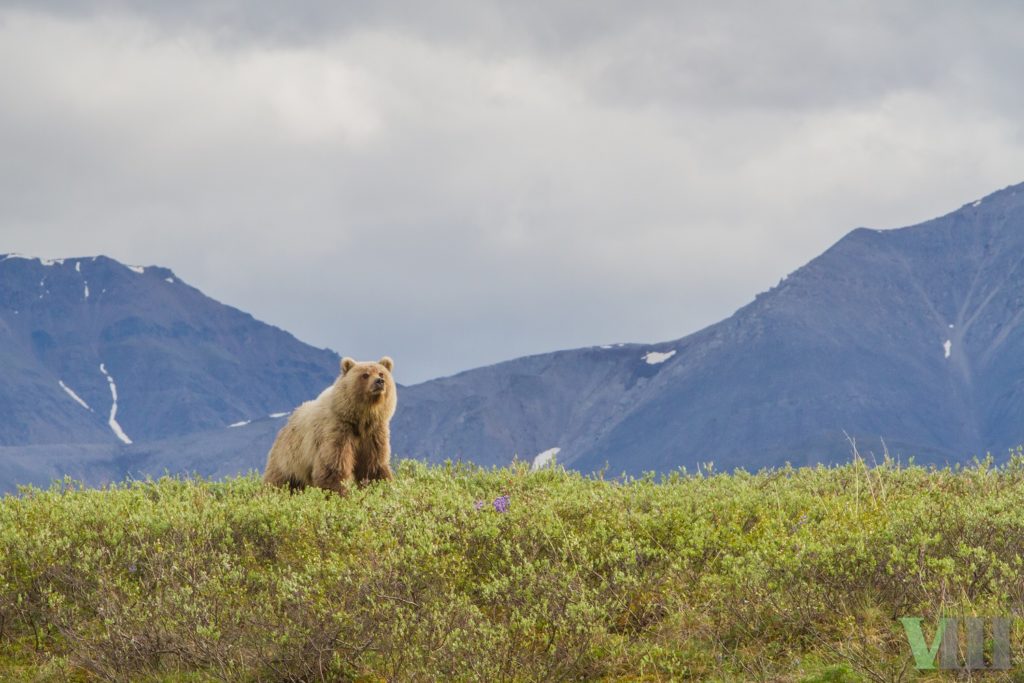Interior Rushes To Advance Arctic Drilling

As a part of President Trump’s plan to sell leases for drilling in our nation’s largest wildlife refuge, the Department of the Interior (DOI) and Bureau of Land Management (BLM) released a rushed draft environmental impact statement (EIS) on December 22. This came just shortly before the five-week government shutdown.
While the public was promised a sound environmental review process, actions speak louder than words. The review, arbitrarily limited to one year, has been rushed and arguably predetermined. What is certainly does not do is align with Alaska Senator Lisa Murkowski’s promise to “do it right,” to “take care of our lands, wildlife and people.”
The review lacks critical information and rests on the false perceptions that “we’re only impacting the coastal plain part of the Refuge, which is just 1.5 million acres out of the 19 million acre Refuge,” or that oil exploration/seismic testing, etc., affects just 7% of the Refuge.
You know, no big deal.
These are wrong and disastrous simplifications. The ecological impact zones extend much farther than the road, subdivision or drill pad footprints, and will have a ripple effect on the entire ecosystem. Birth rates will decline and migration patterns will change for species like the Porcupine caribou, which the first people of the area¬ depend on for subsistence. The impacts will extend to global communities, as drilling in the Arctic will help worsen climate change while also sending a message that no place is off limits to resource extraction. Estimates indicate that if Arctic Refuge oil is extracted and burned, it would add climate warming emissions equivalent to 898 coal plants operating for a year or 776 million passenger vehicles added to the road.
The Porcupine caribou herd on the Arctic Refuge coastal plain. (Micah Baird)
Public Hearings to review the draft EIS began in Alaska on February 4, including stops in Fairbanks, Kaktovik, Utqiagvik and Fort Yukon. This past weekend, hearings took place in Arctic Village and Venetie and in Anchorage on Monday. In the lower 48, BLM held only one hearing, in Washington, D.C., disregarding national concerns. Human rights and environmental groups are rallying across the country to show their support. Nearly 200,000 public comments have already been collected, and counting.
Adam Kolton, executive director at Alaska Wilderness League, testifies in support of Arctic Refuge protections at the D.C. public hearing. More than 150 people signed up to testify. (Alaska Wilderness League)
“Removing protections from our country’s largest wildlife refuge sets a dangerous precedent,” said Wendy Hall, a wildlife educator and strong advocate for the Arctic Refuge and co-founder (along with her husband) of the Adirondack Wildlife Refuge (AWR) in upstate New York, in a separate interview. AWR recently collaborated with the Sierra Club for a community presentation called: “Protecting the Arctic Refuge and the Interconnections of Global Ecosystems.”
A snowy owl rests on Alaska’s Arctic tundra. (Florian Schulz / www.florianschulz.org)
During the presentation, Hall brought along some animal friends including Cara, a snowy owl hit by a bus who can no longer fly. Hall explained that snowy owls are included in the list of more than 200 species of migratory birds that call the Arctic Refuge home.
“Connecting the species to the issue helps in understanding the environmental threats facing wildlife,” said Hall.
Wildflowers on the Arctic Refuge coastal plain. (Micah Baird)
“Alterations or changes like climate affect the whole ecosystem and can negatively impact wildlife. What sense does it make to lessen protections and deplete vital habit? These animals need a refuge.”
The Arctic Refuge represents the remaining 5 percent of Alaska’s coastline protected from resource extraction, as 95 percent has already been opened to extractive industries. On a national scale, 90 percent of public lands in the U.S. have been open to oil and gas leasing. The point? We must protect our country’s remaining wilderness and intact ecosystems.
“Drilling anywhere depletes vital habitat and threatens biodiversity, contributes to climate change, and puts vulnerable communities at risk,” said Hall.
According to data from the Fourth National Climate Assessment, by 2035 the Northeast projects to be more than 3.6 degrees Fahrenheit (2 degrees Celsius) warmer on average than preindustrial era temperatures. This would be the largest increase in the contiguous United States and would occur as much as two decades before global average temperatures reach a similar milestone.
“We need to take this data seriously. We need to implement responsible climate policies and phase out fossil fuel dependence,” said Hall. “Drilling in our country’s largest wildlife refuge is a tremendous step backward.”
The Arctic Refuge coastal plain with the Brooks Range in the background. (Micah Baird)
Rebekah Ashley grew up in the Adirondacks and is a freelance writer and environmental advocate based in Lake Placid, NY. She covers environment and policy with a focus on climate change.







